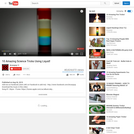
very usefull to understand liquid
- Subject:
- Applied Science
- Material Type:
- Lesson
- Date Added:
- 02/01/2016

very usefull to understand liquid
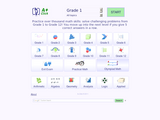
A+ Click is an interactive collection of more than 3700 math problems and answers for K-1 K-12 school program. It defines the personal level of math knowledge. You move up into the next level if you give 5 correct answers in a row. Practice makes perfect.

The Washington Center for Deaf and Hard of Hearing Youth and the University of Washington Language Learning Center partnered to develop a 5 day series of lessons with accompanying videos for ASL on the topic of Cybersecurity. The content is applicable as a STEM education unit for deaf students, as well as supplementary learning for advanced L2 ASL students. The unit provides applied knowledge (e.g., how to be safe as a user of the internet), basic technical knowledge (e.g., what is malware, key vocabulary), and career opportunities (e.g., the National Initiative for Cybersecurity Education (NICE), existing ASL representation and the need for more diversity/representation). All videos have English subtitles and dubbing.

Test
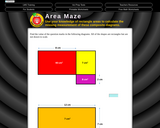
Use your knowledge of rectangle areas to calculate the missing measurement of these composite diagrams.
Find the value of the question marks in the diagrams. All of the shapes are rectangles but are not drawn to scale.
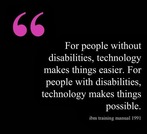
This moduled contains information about assistive technology.PROVIDE AN OVERVIEW OF THE TOPIC HERE
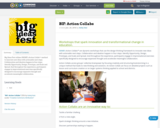
Big Ideas Fest utilizes ISKME’s Action Collab™ method to innovate new ideas with actionable next steps. Collaboration and ideation happen in four steps: Identify Opportunity, Design, Prototype, and Scale and Spread. And throughout the experience, participants engage in improvisational exercises specifically designed to encourage expansive thought and accelerate meaningful collaboration.
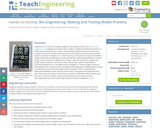
Students act as if they are biological engineers following the steps of the engineering design process to design and create protein models to replace the defective proteins in a child’s body. Jumping off from a basic understanding of DNA and its transcription and translation processes, students learn about the many different proteins types and what happens if protein mutations occur. Then they focus on structural, transport and defense proteins during three challenges posed by the R&D; bio-engineering hypothetical scenario. Using common classroom supplies such as paper, tape and craft sticks, student pairs design, sketch, build, test and improve their own protein models to meet specific functional requirements: to strengthen bones (collagen), to capture oxygen molecules (hemoglobin) and to capture bacteria (antibody). By designing and testing physical models to accomplish certain functional requirements, students come to understand the relationship between protein structure and function. They graph and analyze the class data, then share and compare results across all teams to determine which models were the most successful. Includes a quiz, three worksheets and a reference sheet.
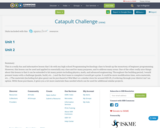
This is a really fun and informative lesson that I do with my high school Programming/technology class to break up the monotony of beginner programming. However; this lesson can be used and applied in essentially any class and for many purposes, and to address many areas. One of the other really nice things about this lesson is that it can be extended to hit many points including physics, math, and advanced engineering.
Throughout the building period, I would present teams with a challenge (puzzle, build, etc…) and the first team to complete it would get a prize. It could be more modification time, extra materials, etc…)
The materials (including hot glue guns) can be purchased at Wal Mart or a similar store for around $20-25, if ordering through your district isn’t an option. With those purchases, it gives you a lot more materials than needed which can be used for additional similar projects.
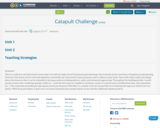
This is a really fun and informative lesson that I do with my high school Programming/technology class to break up the monotony of beginner programming. However; this lesson can be used and applied in essentially any class and for many purposes, and to address many areas. One of the other really nice things about this lesson is that it can be extended to hit many points including physics, math, and advanced engineering.
Throughout the building period, I would present teams with a challenge (puzzle, build, etc…) and the first team to complete it would get a prize. It could be more modification time, extra materials, etc…)
The materials (including hot glue guns) can be purchased at Wal Mart or a similar store for around $20-25, if ordering through your district isn’t an option. With those purchases, it gives you a lot more materials than needed which can be used for additional similar projects.
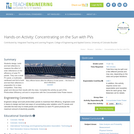
Students design, build and test reflectors to measure the effect of solar reflectance on the efficiency of solar PV panels. They use a small PV panel, a multimeter, cardboard and foil to build and test their reflectors in preparation for a class competition. Then they graph and discuss their results with the class. Complete this activity as part of the Photovoltaic Efficiency unit and in conjunction with the Concentrated Solar Power lesson.

CMS.611J / 6.073 Creating Video Games is a class that introduces students to the complexities of working in small, multidisciplinary teams to develop video games. Students will learn creative design and production methods, working together in small teams to design, develop, and thoroughly test their own original digital games. Design iteration across all aspects of video game development (game design, audio design, visual aesthetics, fiction and programming) will be stressed. Students will also be required to focus test their games, and will need to support and challenge their game design decisions with appropriate focus testing and data analysis.
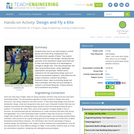
Students learn how to use wind energy to combat gravity and create lift by creating their own tetrahedral kites capable of flying. They explore different tetrahedron kite designs, learning that the geometry of the tetrahedron shape lends itself well to kites and wings because of its advantageous strength-to-weight ratio. Then they design their own kites using drinking straws, string, lightweight paper/plastic and glue/tape. Student teams experience the full engineering design cycle as if they are aeronautical engineers—they determine the project constraints, research the problem, brainstorm ideas, select a promising design and build a prototype; then they test and redesign to achieve a successful flying kite. Pre/post quizzes and a worksheet are provided.
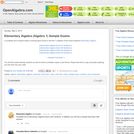
Complete set of mobile friendly Elementary Algebra sample exams with solutions. In addition, there are links to pdf versions and a sample final exam with answers.

verifica su errori su misure calcolate e nelle titolazioni

Does it matter in education whether or not you’ve got a Y chromosome? You bet it does. In this discussion-based seminar, we will explore why males vastly outrank females in math and science and career advancements (particularly in academia), and why girls get better grades and go to college more often than boys. Do the sexes have different learning styles? Are women denied advanced opportunities in academia and the workforce? How do family life and family decisions affect careers for both men and women?
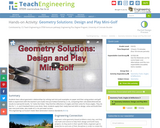
Students learn about geometric relationships by solving real mini putt examples on paper and then using putters and golf balls to experiment with the teacher’s pre-made mini put hole(s) framed by 2 x 4s, comparing their calculated (theoretical) results to real-world results. To “solve the holes,” they find the reflections of angles and then solve for those angles. They do this for 1-, 2- and 3-banked hole-in-one shots. Next, students apply their newly learned skills to design, solve and build their own mini putt holes, also made of 2 x 4s and steel corners.
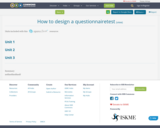
asdfasdfasdfasdf
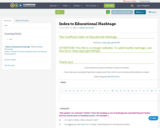
test

Complete set of mobile friendly Intermediate Algebra sample exams with solutions. In addition, there are links to pdf versions and a sample final exam with answers.